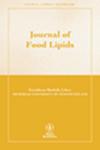Synthetic chemical compounds, such as organochlorines, are known for their persistence and toxicity. The diet represents, for the general population, the main route of exposure to these contaminants, because organochlorines in food constitute a significant health risk, and olive oil has a high consumption rate among people of the producing countries; the control of residues in olive oil is of great importance. In this study, the presence of residues of hexachlorobenzene (HCB), dichlorodiphenyltrichloroethane (DDT) and polychlorinated biphenyls (PCBs) was assessed in samples of extra-virgin olive oil from Tuscany (central Italy). The analyses revealed the presence of HCB in concentrations below the detection limit; DDT and PCBs were instead present in all samples tested, and PCB concentrations were always higher than those of DDT, from 1.24 to 29.35, and from 0.01 to 1.83 ng/g wet weight, respectively.
Because organochlorines in food constitute a significant health risk, and olive oil has a high consumption rate among people of the producing countries, the control of residues in olive oil is of great importance. For the first time here, we present data on organochlorine pollution in oil samples collected in Tuscany, and assess the intake ranges of pollutants related to consumption of the oils analyzed. Showing the low contamination levels of Tuscan olive oil, we wish to confirm the high quality of this kind of food lipid.


